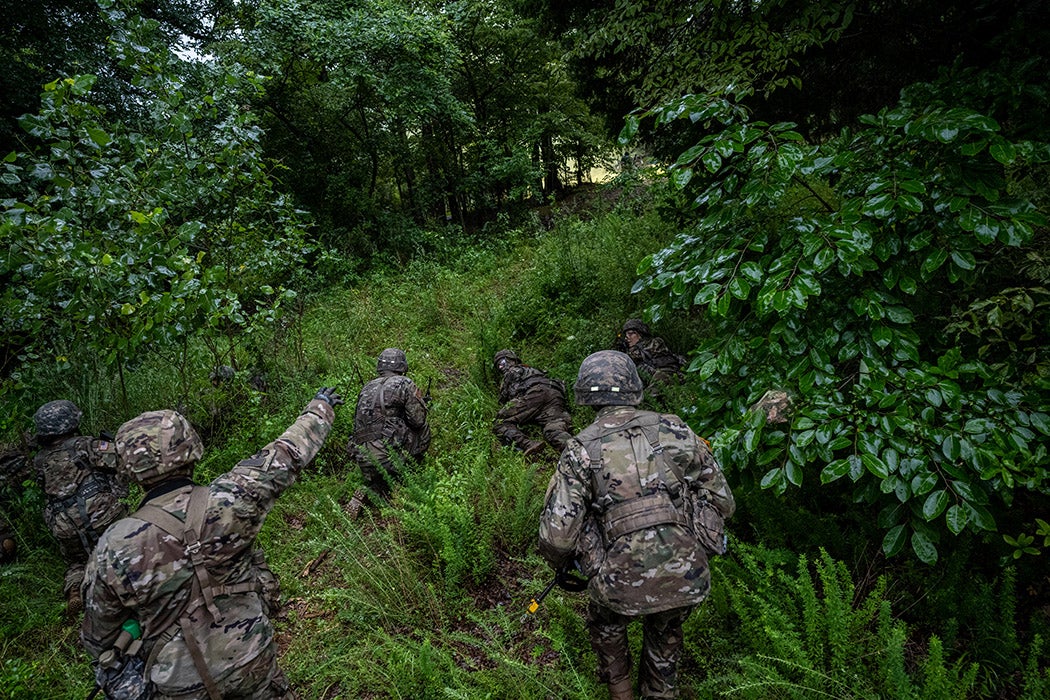War is an environmental as well as human disaster. But the readiness or preparation for war can be more ambiguous ecologically.
Huge tracts of land are reserved by militaries around the world for training, storage, and other purposes. Some of these militarized landscapes have been described as accidental biodiversity wonderlands, saved from the de-naturing transformations of agriculture and development. They’ve been taken up by environmentalists as “conservation by serendipity” and the “lesser of evils.” Other militarized landscapes have been described as bombed and battered hells, leaking toxic legacies from decades of readying for atomic and chemical warfare. The majority of sites listed for toxic clean-up in the United States, for example, are military.
Scholars Peter Coates, Tim Cole, Marianna Dudley, and Chris Pearson compare militarized landscapes in the US, the United Kingdom, and France, exploring the “evolving relationship between the military and the environment.” They describe a middle ground between uncritical claims “that military activity is ecologically harmless (or even beneficial)” and the claims that “military environmentalism” is “mere ‘greenwashing.’” Things are, in short, complicated.
The authors begin by noting that the establishment of military areas typically begins with evictions. For instance, two hundred farm families around the site of the Rocky Mountain Arsenal in Colorado were given thirty days to move in 1942. In another example, when the British village of Tyneham was not returned to its residents after World War II, as promised, protests lasted into the 1970s.
Responding to such protests, the UK’s Ministry of Defense started working with civilian conservation entities to assist with site management. What geographer Rachel Woodward has called “khaki conservation” was underway.
In the US, the legal basis for conservation on military land has existed since 1960. The Endangered Species Act of 1973 included military land under its purview, a rare case of such landscapes not being carved out of legal requirements.
The British military, which “discovered that a fresh militarized environmentalism could quieten opposition,” launched a conservation magazine in 1976 called Sanctuary. NATO issued an Environmental Principles Statement in 1990 and began to “train green” at the NATO school in Oberammergau, Germany, in 1995. In 2007, the French military introduced its first environmental plan.
Critics have considered such actions an exploitation of environmental discourse “to justify military control of substantial chunks of national territory.” Perhaps not surprisingly, there’s now talk of “green weaponry” as the weapons industry pushes to being labeled “sustainable.”
Weekly Newsletter
Some militaries have been eager to turn rare species into icons. The tiny Fairy Shrimp of the Salisbury Plain training area in the UK is said to thrive in tank ruts. The same area was chosen as the site for a Great Bustard reintroduction scheme in 2004. One of the world’s heaviest flying birds, Great Bustards had been extirpated in Britain by hunting in the nineteenth century. Meanwhile, the elusive Alcon Blue butterfly holds on in the Lande d’Ouée training area in Brittany, France. In Wales, soldiers have guarded Red Kite nests from egg collectors and grouse-hunting estate managers dedicated to illegally killing all raptors. This training ground also hosts rare mosses and fungi. In 2004, more than 5000 acres of the Rocky Mountain Arsenal were dedicated as the Rocky Mountain Arsenal National Wildlife Refuge. Parts of Colorado’s Rocky Flats facility, where plutonium triggers were made for nuclear weapons, were also converted into a NWR. And while 90 percent of its habitat elsewhere has been devoured by suburbs and strip malls, the Preble’s Jumping Meadow Mouse is the star of Rocky Flats.
At the same time, the US Department of Defense complains about the Endangered Species Act and “encroachment” on training facilities. Yet, as Coates et al. write, “military operational readiness usually trumps environmental considerations.” Not every general wants to be in charge of a biodiversity refugium, after all. Given contemporary politics in all three countries, such accidental, ambiguous, preserves may be quite tenuous.
Support JSTOR Daily! Join our new membership program on Patreon today.







